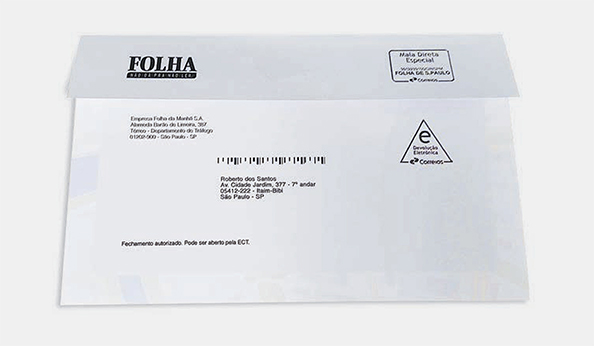Many businesses say they love and value their customers, but how many can say they really see them as individuals? When you run a large business, the most visibility you have on your customers typically comes from the data you collect from them.
In the latest issue of INCITE, we explored Street Signs – a case study about a creative marketing campaign from Brazil. Folha de Sao Paulo (FSP), one of Brazil’s leading newspapers, set out to renew subscriptions of their lapsed customers. They had a very low budget to work with, but they managed to hit the nail on the head with an unusual and innovative direct mail marketing campaign that highlighted the individuality of their customers.
FSP used customer data in an unconventional way in their campaign. They personalized each piece by replicating the recipient’s actual street sign and address. Their customers saw that the company saw them and wanted their business. The recipients realized that they were more than just a number – they were valued customers that the company was loyal to.
The campaign performed incredibly well on an economical budget. Its success demonstrates the power of creativity and data. It shows that it is incredibly worthwhile to personalize direct mail.
Small to medium sized business owners should take note of this unique campaign. You can glean a lot from this case study. Consider these key takeaways:
Every Customer Counts
Many companies think customer loyalty is all about a customer’s devotion to a brand, but loyalty is a two way street. Do your customers know you care? FSP highlighted their customers’ addresses to show them that they saw them as individuals. Renewing each customer’s subscription mattered.
Leave No Customer Behind
A particularly important thing to note in this case study is who was targeted. FSP reached out to their old customers, instead of engaging potential new customers, with a direct mail piece. This was a gamble. Most companies leave lapsed customers in the dust, but FSP knew that if they showed those customers that their business was missed, and that their absence was felt, they could potentially re-engage those customers. They were right!
By showing old customers that you care, you demonstrate that you are loyal to them – that you’re not all about the next sale.
Data Opens Doors
The more data you have about your customers, the more you can define who they are, relate to them, and communicate with them to serve up relevant content. Think about this – FSP only had addresses for their lapsed customers. With that limited information they were able to engage them creatively and individually. What FSP did with those addresses is just the tip of the iceberg for creative marketers. If you want to show customers you care via their home address, send them a gift or a thank you card with their next order! Data gives you insight into your customer base, allows you to personalize your messaging, and know who to contact for what promotion. Data opens doors and helps you figure out which doors to knock on.
Next Level Data
Take your direct mail campaign a step further with more data. Collecting detailed data from your customers is worth the effort. Why not collect your customers’ birthdays and mail them each a card complete with a personalized discount code? The more data you have, the more opportunities for communication you’ll have.
Not sure how to get personal information from your customers? Tools like Mailchimp make it simple. Mailchimp’s pop up subscription boxes can be embedded on your website. Pop up boxes allow you to collect data from your customers when they visit your website. This can be off-putting for some visitors, so incentivize your customers to submit their information. Be sure to outline how they’ll benefit from sharing their personal information with you in the pop up message.
Can you see your customers? If you only have addresses for your customer base don’t fret – there’s a lot you can do with that! Data overlays by postal code area can you tell you a lot about the type of people who live in that neighbourhood – income, education level, age, family structure, ethnicity and much more. They make it easy to target your offers to appeal to your customers.

